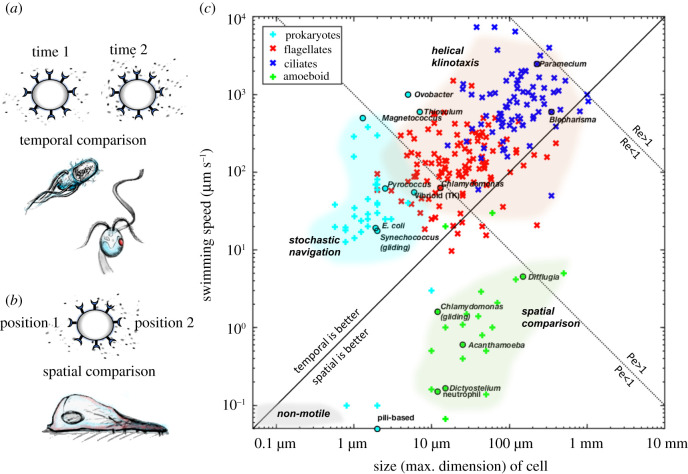Figure 3.
Eukaryotes unlocked new biophysical regimes. (a) Temporal sensing strategies typically involve comparing the signal at two slightly different times—this can be stochastic and rotational diffusion limited (as in many prokaryotes), or involve self-steering (as in many ciliates and flagellates). (b) Spatial sensing strategies involve comparing the signal at two different positions at the same time (as in most amoeboid cells). (c) These distinctions create a prokaryote–eukaryote divide with respect to behaviour, as visualized here in a phase space of organism size versus speed (log–log scale). Three phase boundaries partition this space (see also table 2), namely, the Reynolds number (Re), Péclet number (Pe) and the relative advantage of temporal versus spatial sensing (plotted here for an integration time τ = 1 s). Data points are collated from the literature, where some species of particular interest are highlighted. (In particular see: amoeba [326], flagellates and ciliates [327] and marine bacteria [328]. The full dataset is available as supplementary material.)

